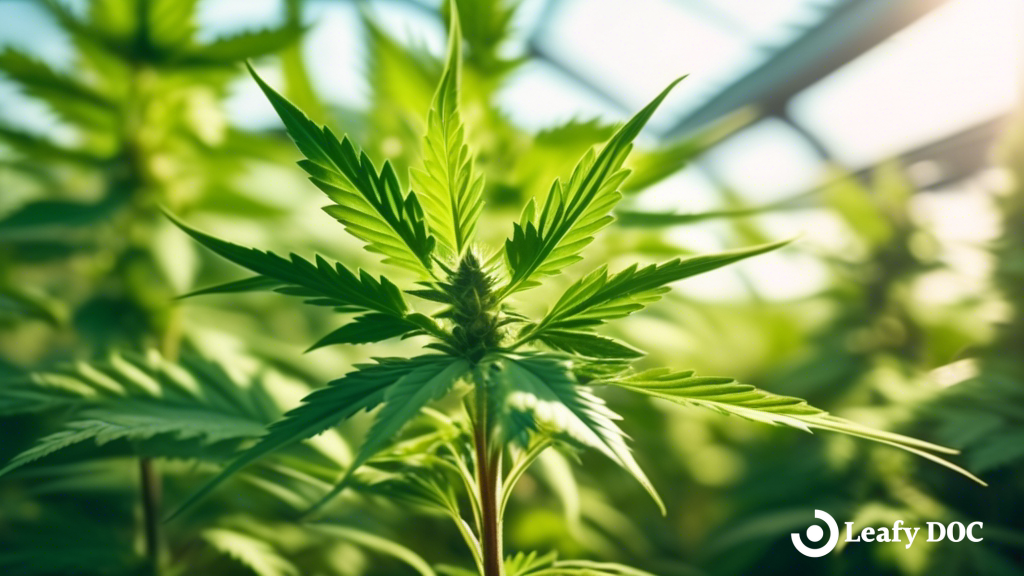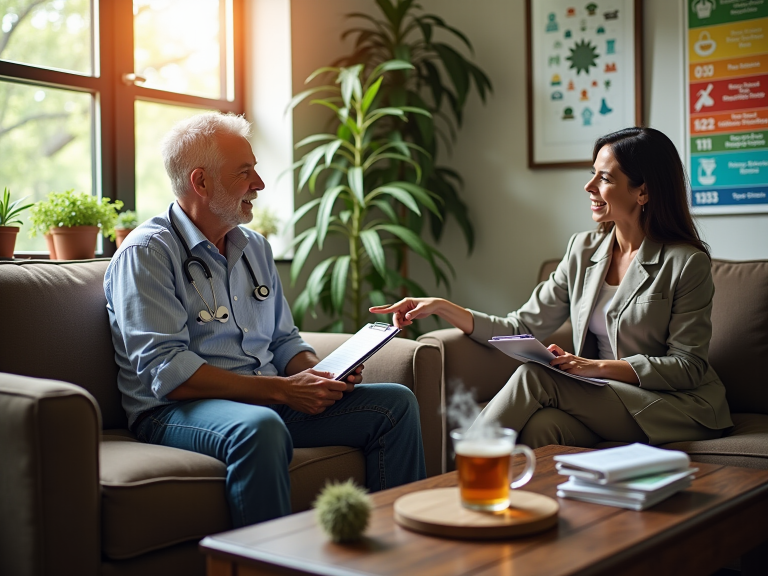Implementing Effective Pest Control Strategies In Cannabis Cultivation
by Ayesha Aziz · April 28, 2024
Learn how to keep your cannabis plants healthy and pest-free with these top pest control strategies. Click now to discover effective tips for successful cultivation!

Are you looking to ensure a healthy and thriving cannabis crop free from pesky pests? Implementing effective pest control strategies in your cultivation process is crucial to safeguarding your plants and maximizing your yield.
By identifying common cannabis pests, implementing prevention measures, and utilizing natural and organic pest control methods, you can maintain a pest-free environment for your plants to flourish.
In this article, we will guide you through the process of implementing effective pest control strategies in your cannabis cultivation. From integrated pest management techniques to monitoring and maintaining pest control efforts, we will provide you with the tools and knowledge necessary to protect your plants and promote a successful harvest.
Let’s dive in and learn how to keep those unwanted pests at bay in your cannabis garden!
Key Takeaways
- Importance of implementing pest control strategies in cannabis cultivation
- Identifying common cannabis pests: spider mites, fungus gnats, aphids
- Prevention measures: proper hygiene, companion planting, organic pest control methods
- Natural and organic pest control methods: beneficial insects, neem oil
Identifying Common Cannabis Pests
Now that you’ve learned about the importance of implementing pest control strategies in cannabis cultivation, let’s dive into identifying common cannabis pests that can wreak havoc on your plants.
One of the most common pests to watch out for is the spider mite. These tiny creatures may be hard to spot with the naked eye, but they can quickly multiply and suck the life out of your plants.
Another sneaky pest is the fungus gnat, which thrives in moist soil and can cause damage to the roots of your cannabis plants.
It’s also essential to keep an eye out for aphids, which can quickly infest your plants and weaken them. These small insects feed on the sap of your cannabis plants, leading to stunted growth and yellowing leaves.
By being vigilant and regularly inspecting your plants, you can catch these pests early and take action to protect your valuable crop.
Prevention Measures for Pest Infestations
To keep pests at bay, it’s crucial to regularly inspect plants for any signs of infestation. This proactive approach allows you to catch any issues early on and prevent widespread damage.
Here are some prevention measures you can take to protect your cannabis plants:
- Maintain Proper Hygiene: Keep your cultivation area clean and free of debris to eliminate potential hiding spots for pests.
- Implement Companion Planting: Integrate pest-repelling plants like marigolds or basil to deter unwanted insects from your cannabis plants.
- Use Organic Pest Control Methods: Opt for natural solutions like neem oil or insecticidal soaps to target pests without harming your plants.
Taking these preventive steps will not only protect your cannabis crop but also promote a healthy and thriving cultivation environment.
Natural and Organic Pest Control Methods
Utilizing natural and organic methods for pest prevention can help ensure a healthy and harmonious cannabis crop. Not only are these methods environmentally friendly, but they also promote the overall well-being of your plants.
Consider introducing beneficial insects like ladybugs or predatory mites that can naturally control pest populations without the need for harmful chemicals. Additionally, using neem oil or insecticidal soap can effectively deter pests while maintaining the integrity of your crop.
By incorporating natural and organic pest control methods, you’re not only safeguarding your plants but also contributing to a sustainable and healthy ecosystem.
Embrace these methods as a way to serve your plants and the environment, allowing them to flourish in a safe and balanced manner.
Note: Embrace holistic healing with Leafy DOC’s online service. Connect with licensed medical marijuana doctors for comprehensive evaluations and certifications, paving the way for a better quality of life.
Integrated Pest Management Techniques
Integrated Pest Management techniques involve combining various methods to keep crops healthy and free from pests. This approach focuses on prevention, monitoring, and control to minimize the impact of pests on cannabis cultivation.
By using a combination of biological controls, cultural practices, and chemical solutions as a last resort, you can create a sustainable and effective pest management strategy for your cannabis plants.
Implementing Integrated Pest Management techniques requires a proactive mindset and attention to detail. Regularly inspecting your plants for signs of pests, implementing companion planting to attract beneficial insects, and maintaining proper sanitation practices are all essential components of this approach.
Remember, the goal is to create a balanced ecosystem where pests are managed without causing harm to the environment or compromising the quality of your cannabis crop. By embracing Integrated Pest Management techniques, you can ensure the health and vitality of your plants while minimizing the need for harsh chemicals.
Monitoring and Maintaining Pest Control Efforts
Ensure you regularly inspect your cannabis plants for signs of pest infestations, such as aphids or spider mites, to catch any issues early and prevent widespread damage. For example, a grower in California discovered a whitefly infestation while inspecting their plants during the vegetative stage, allowing them to implement targeted treatment before it spread to other crops. By staying vigilant and proactive, you can nip pest problems in the bud and protect your valuable crops from harm.
To help you keep track of your pest control efforts, here is a helpful table outlining key steps for monitoring and maintaining a pest-free cannabis cultivation environment:
| Monitoring and Maintaining Pest Control Efforts | Description |
|---|---|
| Regular Inspections | Check plants daily for signs of pests |
| Implement Traps | Use sticky traps to catch flying insects |
| Maintain Cleanliness | Keep the grow area clean to deter pests |
| Rotate Pest Control Methods | Prevent pests from developing resistance |
| Record Keeping | Track pest sightings and treatments for future reference |
By following these strategies and consistently monitoring your plants, you can ensure a healthy and thriving cannabis crop free from harmful pests. Your dedication to maintaining pest control efforts will not only benefit your harvest but also contribute to the well-being of the entire cannabis cultivation community.
Frequently Asked Questions
How can the use of pesticides affect the quality and safety of cannabis products for consumers?
Using pesticides can harm consumers by contaminating cannabis products. Residual chemicals can affect quality, causing health risks. Prioritize organic methods to ensure safe, high-quality products for those you serve.
What are some potential long-term effects of repeated pest infestations on cannabis plant health and yield?
When faced with repeated pest infestations, cannabis plants may suffer up to a 50% decrease in yield, impacting both plant health and final product quality. It’s crucial to address these issues promptly for optimal results.
Are there any legal regulations or restrictions on pest control methods in the cannabis cultivation industry?
Legal regulations in the cannabis industry dictate which pest control methods can be used. It’s crucial to comply with these rules to ensure the health and safety of both consumers and workers in the cultivation process.
How can environmental factors, such as temperature and humidity, impact the effectiveness of pest control strategies in cannabis cultivation?
Environmental factors like temperature and humidity can greatly affect the success of pest control methods in cannabis cultivation. High humidity can encourage pests, while extreme temperatures can impact the effectiveness of certain treatments.
What are some potential risks or challenges associated with using natural predators or beneficial insects for pest control in cannabis cultivation?
Navigating the delicate balance of introducing natural predators to control pests in cannabis cultivation can be like releasing a pack of wolves into a sheep pen. The risk of unintended consequences looms large.
Last Updated: August 8, 2024
Get Approved for Your Medical Marijuana Card in Minutes!

Get Your Medical Card
Connect with a licensed physician online in minutes

Like This Article?
Share with your friends
Table of Contents
Keep Reading
-
Enhancing Meditation With Cannabis
Unleash the Power of Cannabis in Meditation: Unlock Deeper Relaxation and Mindfulness. Enhance your practice today and elevate your journey to tranquility with cannabis-infused meditation techniques. Click here to explore the ultimate guide!
-
Relieving Pain With THC Vs CBD
Discover the ultimate showdown between THC and CBD for pain relief. Uncover the truth about how these compounds battle it out to provide relief, and click now to find out which one is right for you!
-
Steps to Obtain Medical Marijuanas Utah for Chronic Pain Relief
Discover how to obtain medical marijuanas in Utah for effective chronic pain relief.



